Video has become the focal point of almost everything, from binge-watching shows to e-learning, online yoga to online recitals. You could be one among the millions accessing video every day; in fact, this widespread adoption is driving the market growth.
The Global Video on Demand (VOD) market is projected to reach $444.29 billion by 2032, a significant growth at CAGR of 13.5% from $144.57 billion in 2023. (Source: Polaris Market Research)
Much of this growth is due to the accessibility of video content from anywhere at any time, unlike typical broadcast schedules.
As video consumption continues to evolve, so are the chances of thriving in this industry, especially if you are a content creator or broadcaster.
This blog answers your burning questions: what is VOD, how does it work, how to ideate a business model around it, and more.
Let’s get started on this no-fluff blog about VOD.
What Is VOD?
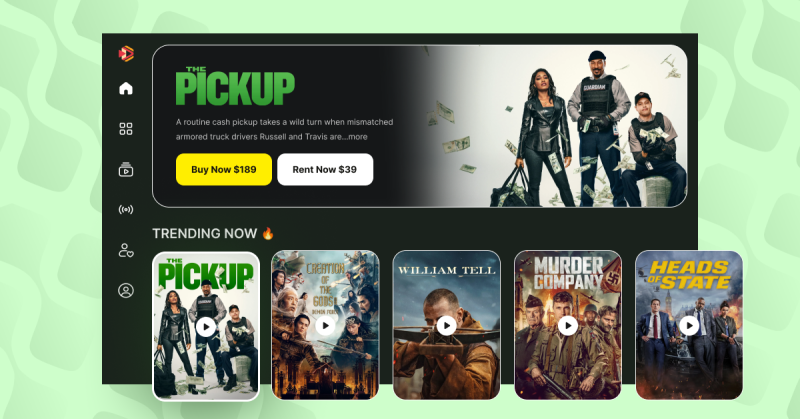
Video on Demand refers to a video library from which users can access videos on demand, from anywhere at any time. Unlike linear TV, which has a pre-fixed schedule, VOD allows users to watch videos at their convenience.
Let us surprise you with a fact: 2 in every 3 users who access videos regularly don’t know that they’re accessing on-demand video content.
Your 10-minute morning workout video on a fitness app, the Nth re-watch of your favorite sit-com during lunch, or your up-skill learning video on a learning platform: all exemplify video on demand. The video content is up there for grabs whenever you want to access it.
How Does Video On Demand (VOD) Work?
VOD has become the backbone of on-demand convenience, ensuring users access videos in a jiffy. However, behind a seamless VOD experience lies a 3-step process that simplifies how VOD works:
- Content Upload & Processing
Content creators upload pre-recorded videos to a VOD platform, where the videos are categorized according to Metadata tagging (titles, descriptions, tags).
A viable VOD platform, like VPlayed, not just stores your file, but it transcodes the video into multiple formats, better optimized for users’ devices and internet speed.
Transcoded video is stored in a built-in, global CDN in the form of byte-sized chunks for a better viewing experience.
- User Access & Authentication
Once the video is transcoded, the VOD platform deploys user access levels that determine who can access the video and who cannot.
This is where the VOD business model comes into play, ensuring that authorized people access the video content. User authentication is what helps Netflix safeguard its original & licensed content, and a pay-per-view system confirms the payment.
This stage introduces monetization opportunities, while safeguarding your content and enhancing the user experience.
- Playback
When the user accesses video content, the video player continuously monitors the internet connection and alters the video quality, courtesy of adaptive bitrate streaming (ABR) technology.
Unlike traditional broadcasting, the VOD platforms allow users to play, pause, and seek with personalized controls.
VOD platforms also gain valuable insights into the video-viewing experience and platform functionality during the playback.
Benefits of Video-on-Demand (VOD) For Your Business
With the technical foundation covered, it’s time to uncover the actual benefits of VOD that can transform your business. Let’s explore them:
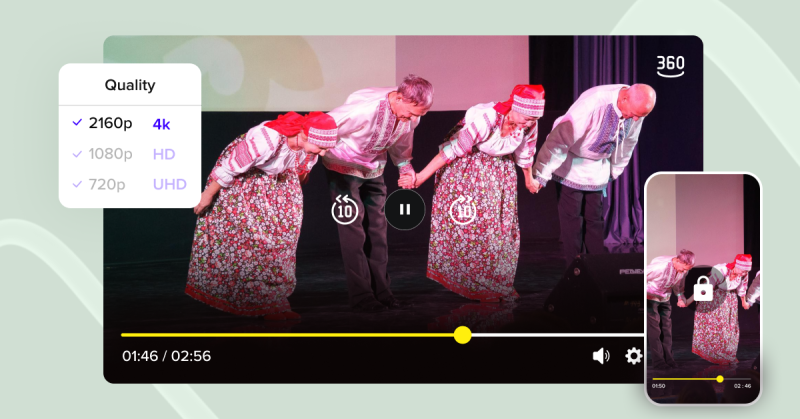
Operational Benefits
Businesses can eliminate recurring investment in training, printed manuals, and physical resources. You create an employee onboarding training program (in a video format) once, training thousands of employees at recurrent intervals.
Employing a VOD platform with global CDN ensures that training videos are distributed in a jiffy, across worldwide servers. Scalability of the platform ensures relevant video libraries for relevant user groups (like employees, clients, and managers). This way, you don’t need to invest in separate platforms for each department or user group.
Revenue Benefits
While creating training programs for your business, you can also monetize training video on demand by licensing your content to other businesses.
Video testimonials, self-guided product demos, and comprehensive case studies impact purchasing decisions, thereby increasing your chances of generating revenue.
Last but not least, the VOD’s role in reducing the operation costs will curb support tickets and related costs, thereby protecting your revenue.
Competitive Benefits
High-quality video training materials, product demos, and explanatory videos enhance brand perception as opposed to a brand publishing static blogs alone.
Businesses can train their employees quickly with video content, thereby eliminating the traditional training bottlenecks. This helps ‘em leapfrog their competitors in the ever-growing business market.
Competitive benefits of VOD for businesses multiply over time, thereby making life difficult for competitors to bridge the gap.
Which VOD Model Is Right for Your Business?
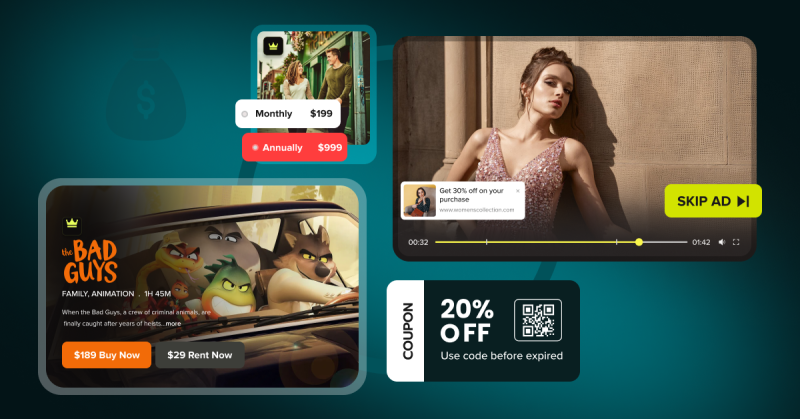
Now that you know why VOD benefits your business, the next step is selecting the right model to maximize those benefits. Here’s an overview of four monetization models to help you decide:
1. Subscriptions (SVOD)
Subscriptions or recurring payments (monthly, quarterly, or annually) for video content is a prominent monetization model. Subscribers can access an exclusive video library at their disposal.
However, not every video library can be locked in a subscription plan. The VOD businesses need to pack their valuable expertise in an appealing form to the customers so that they are willing to pay a fee.
2. Advertisements (AVOD)
Placing advertisements in the video content helps businesses generate revenue while also offering content free of cost. This strategic approach helps businesses reach larger audiences, thereby generating recurrent revenue.
This monetization model works well for VOD startups, helping them reach broader audiences while generating consistent revenue.
3. Transactional (TVOD)
The transactional model allows users to select specific content and rent or purchase it at a one-time fee. This gives users full control: what to view, whether or not to pay, and how long to rent.
This model works well if you have video content revolving around product training modules or expert-led masterclasses. Users can pay a one-time fee to access the masterclass video.
4. Donations
Donations serve as the go-to model for independent creators who offer free access to their content while relying on community support.
VOD platforms offer Patreon integrations and secure payment tools that make it easy for creators to receive voluntary contributions from viewers.
This model not only helps sustain the VOD business but also fosters a sense of community and appreciation around the content.
How Does VOD Differ from Live Streaming?
VOD and live streaming serve different purposes, even though both deliver videos over the Internet.
When it comes to content availability, VOD allows viewers to access video content at any time. However, viewers can access live stream videos only when they happen, or else, when a recording is shared by the creator.
Viewers have complete control: they can play, pause, or jump to a specific part of the video on-demand. On the other hand, live stream videos come with restricted playback controls.
VOD is an always-open library, where users can access video content at their own pace and time.
5 Steps to Build Your VOD Business from Scratch
You now have all the foundational knowledge you need. Let’s dive into the actionable 5-step roadmap that will get your VOD business off the ground.
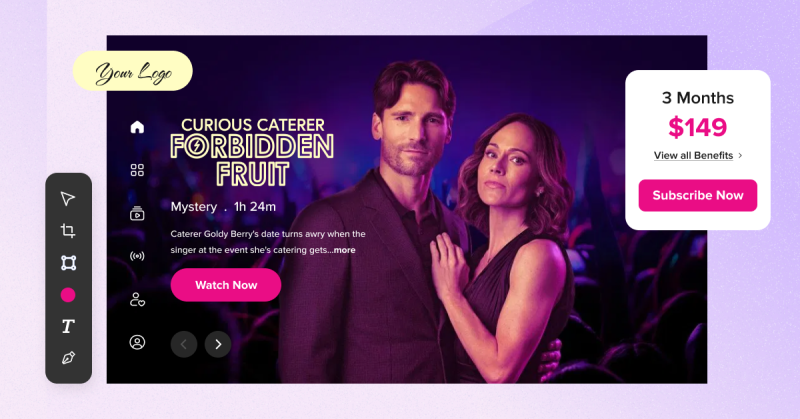
➡️Define Your Niche & Audience
It is essential to focus on a specific niche, because you can’t tailor your video content to everyone, can you?
If you already have a business in entertainment, fitness, or religious community, you have a set niche. But if you want to start a VOD business, you may want to analyze market trends and target demographics.
Knowing your VOD audience will help you ascertain who you’re speaking to. You can tailor your content strategy based on that.
➡️Prepare Your Video Content
Upon determining your niche, you need to source your video content. If you already have a video library, start organizing it by metadata tagging (titles, descriptions, tags, thumbnails, etc.).
If you don’t have an existing video library, you can license videos from third-party providers.
➡️Choose a Reliable VOD Platform
Look for a VOD platform that offers seamless customizations and white-label branding freedom. Ensure that the platform you choose embraces multiple monetization models, augmenting your revenue-generating chances.
Your VOD platform should grow along with your business; scalability is an important aspect of an ideal platform.
➡️Upload Videos
Up next, start uploading the video assets to your VOD platform. Brownie points to the VOD platform if it offers a bulk upload option, eliminating the hours of manual upload work.
➡️Launch Your Platform
Don’t underestimate the power of your VOD community. Soft launch your VOD platform to a restricted community of users, who, in turn, will spread the word about your exciting content library.
Real-time analytics monitor your platform, track the user behavior, thereby helping you make informed VOD business decisions.
Conclusion
Understanding VOD and how it works helps creators to approach creation and monetization more confidently.
There are various online video platform, and sometimes the best way to choose one is to explore a few, give them a try, and narrow down your choice.
For monetization, you should focus on one revenue option, and as you get more familiar, you can try having more than one.
Frequently Asked Questions (FAQ):
GUDSHO provides content creators with the most suitable VOD platform where they can independently monetize their content from anywhere at anytime. In other words, it helps professional creators to align their passion & set their own journey as a content entrepreneur. The platform capacitates their art work by empowering them with monetization possibilities.
The greatest secret for a successful video streaming business is entirely dependent on its revenue model and content strategy. Some of the major streaming business revenue model comprise of SVOD, TVOD, AVOD, Hybrid Model, etc. Remember, the monetization model is largely dependent on what type of content you’re putting in it.
As a business it is essential to understand your customers. This will include what’s their view and what will motivate them to buy. Now imagine you find a platform selling what you need, but instead of clear price you see ‘call for a quote’! Surely you’ll need to give your time to a business to understand about your customer buying habits & curated content with which you’re selling.
It is always better to collaborate with an independent monetization platform which will assist you in gearing up revenue ladders quickly. Since creating a profitable VOD channel hardly takes much of your time, it is better and feasible option to reap revenue-scaling benefits quickly. Moreover, the investment goes much more higher in terms of platform infrastructure creation.

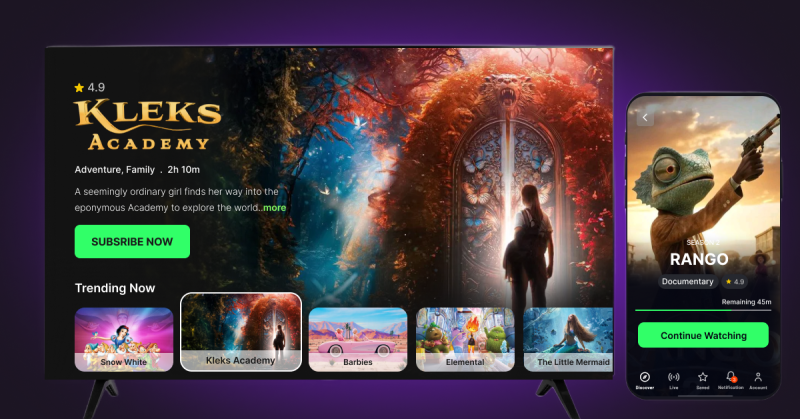
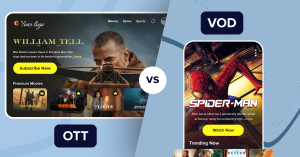

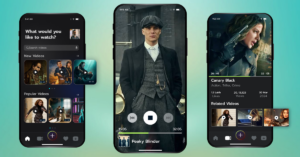
I found this blog post to be incredibly informative and valuable in providing insights into the workings of VOD (Video on Demand). It has shed light on the extensive effort involved in ensuring a seamless and dependable streaming experience for viewers. Now, I have a solid understanding of how to vod works for video business.
While searching for information on how video on demand works and its benefits, I came across this article that has provided me with a detailed of knowledge. It has not only enhanced my understanding of VOD but also given me a comprehensive overview of the vod platform, Keep sharing!
I had no idea how video on demand and how vod works for streaming. This article did a great job explaining the differences and how it all works.
Great article! I’ve always been curious about video on demand platform and how it works, and this post explained it perfectly. I love how vod provides a user-friendly platform for both live streaming and on-demand videos. It’s amazing how technology has evolved to allow us to watch our favorite shows and movies whenever and wherever we want. Thanks for the informative read!
I never realized the complexity behind video-on-demand until I read this post. It’s fascinating to learn about the behind-the-scenes processes that make VOD possible. I appreciate how the article broke down the concept and highlighted the benefits of using Vide on on Demand. Keep up the great work!
Good to know about the video on demand. The breakdown of the VOD workflow, from content upload to delivery, was especially helpful in visualizing the entire process.
Thank you for this informative blog post on video on demand and how it works! It provided a clear understanding of the concept and its functionalities. I do have a question regarding content management and organization. How does GUDSHO’s VOD platform handle the organization and categorization of video content?
I thoroughly enjoyed reading this blog post on definition of VOD. The breakdown of the VOD process was well-presented, and the benefits of on-demand video streaming were highlighted effectively. A great resource for anyone looking to understand VOD better!
Brilliantly explained! This concise post cleared all my doubts about VOD and its functionality. Thanks for sharing
This well-written article provided a comprehensive understanding of video on demand platforms. Excellent Job!
Insightful post on Video on demand platform and how it work! As media houses, we appreciate the clear explanations, which will help us capitalize on the growing popularity of on-demand content and provide better experiences for our viewers. Well done.
I was looking for the information about VOD. I now have a clear understanding of video on demand platforms and its definition. The examples and illustrations helped solidify my knowledge. Great job!
Great post about VOD monetization models, especially in delivering premium video content. I appreciate the clear breakdown of the process, making it easier to understand how VOD revolutionizes the way we consume high-quality videos
Before I start utilizing VOD platform for uploading my video content, I’m interested in understanding the functioning of video on demand. Could you please provide me with information about your pricing options or packages available?
I’m a fitness influencer. I have been considering creating video content and this guide opened my eyes to the intriguing concept of Video On Demand (VOD). Can you share some tips on how to get started with monetizing fitness videos? My goal is to reach a wider audience through vod platform. Thank you for shedding light on this exciting opportunity!”
Hi, We are looking to professionalize and both VOD hosting and live streaming setup functions for subscribers and how does pay per view work customers, and want to provide best viewing experience for subscribers.
Through this article, we could know the meaning & definition of vod streaming with monetization models is that video on demand platform.
Thanks for sharing Very detailed information about how video on demand works. I really appreciate this website. Keep writing!